مقدمة
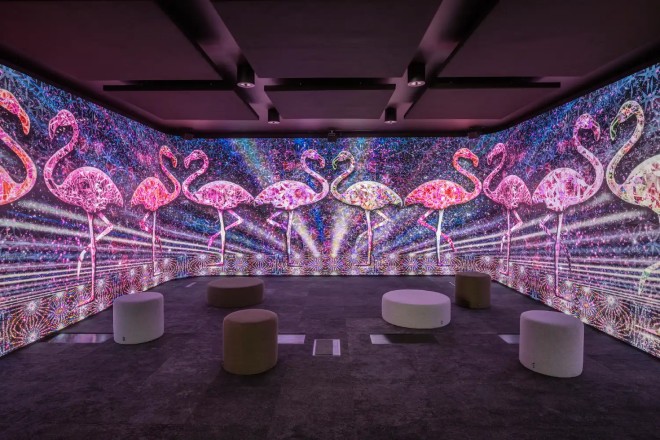
Walking into a space, it feels like traveling to another world. The senses of sight, hearing, and even touch are deeply attracted. This is the charm of immersive experience. Behind all this, شاشات ال اي دي play an indispensable role.
From the historical corridors of museums to the fantasy adventures of theme parks, LED screens not only light up the pictures, but also light up our imagination. Today, let’s talk about how LED screens shine in immersive spaces.
1. Specific applications of LED screens in immersive spaces
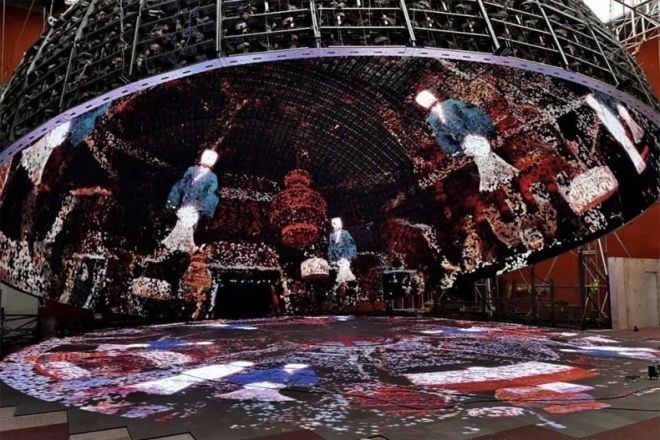
1). Exhibitions:
- Art المعارض:
LED screens are transformed into dynamic canvases, dancing with artworks, injecting new life into art through gorgeous visual effects, and supporting interactive devices, allowing the audience to become part of art.
- المتاحف and science and technology museums:
Historical scenes are reproduced, and scientific and technological knowledge is vividly displayed on the screen. LED screens, with their high-definition and high-brightness characteristics, allow ancient stories and modern technology to collide and spark wisdom.
- المعارض التجارية:
Product displays are vividly displayed, and brand stories are told. LED screens help brands and consumers establish emotional links and create unforgettable shopping experiences.
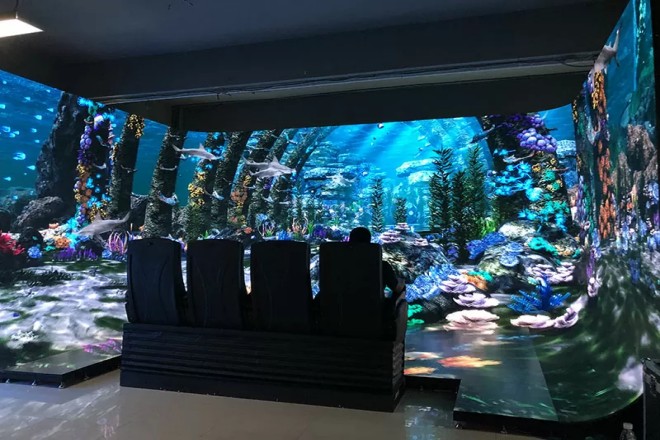
2). الترفيه والتسلية:
مدينة الملاهي: Virtual reality and LED display screens are perfectly combined to bring visitors into a fantasy world. Every turn is a novel visual feast.
KTV and bar: Light and shadow interweave, music and visual enjoyment, LED display screens light up the night, making every party full of personality and passion.
Private theater and home entertainment: Customized LED display screens make home a private theater, whether it is movie night or game carnival, you can enjoy the ultimate visual experience.
3). تعليم and training:
Subject education: History, geography, science…LED display screens visualize abstract knowledge, make learning vivid and interesting, and stimulate children’s interest in exploring the world.
Remote teaching: High-definition picture quality, smooth interaction, LED display screens break geographical restrictions, make high-quality educational resources within reach, and promote educational equity.
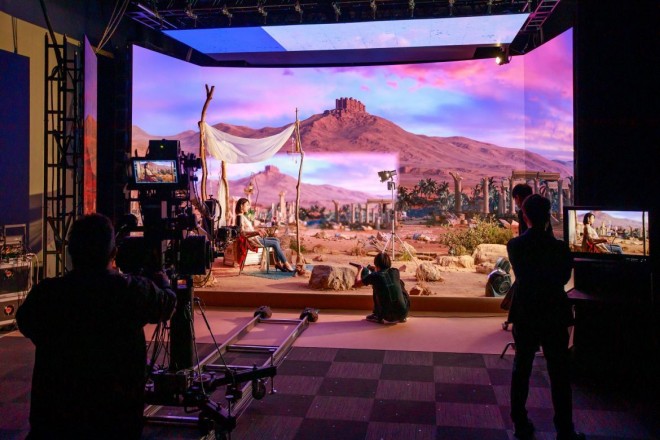
4). Virtual shooting
In XR virtual shooting, the LED display can display virtual scenes rendered in real-time by a 3D rendering engine.
These scenes can be customized according to the director’s creative needs, including background, environment, lighting, etc., to create a realistic virtual world for actors and audiences.
Actors can perform in front of the LED display and interact with the virtual scene in real-time. This interaction not only improves the realism of the actors’ performances, but also brings a more immersive viewing experience to the audience.
2. Design principles and techniques for creating immersive space
1). Space layout and visual orientation
1.1). Seamless splicing of LED screens
اختيار المواد:
First of all, it is crucial to choose high-quality LED display screens. These screens should have high resolution, high brightness, high contrast and excellent color reproduction capabilities.
التثبيت والتصحيح:
During the installation process, ensure the accuracy of the splicing between each screen unit, eliminate the gap through fine calibration and adjustment, and achieve the overall smoothness and coherence of the screen.
Seamless technology:
Use advanced seamless splicing technology, such as pixel-level splicing, surface correction, etc., to ensure that the screen is visually presented as a complete and borderless whole.
1.2). Visual guidance of light and shadow and content
Content layout:
Carefully plan the content layout to ensure that the information is orderly and the key points are highlighted. Use visual hierarchy and color contrast to guide the audience’s sight to flow naturally.
Lighting design:
Combined with lighting design, create an atmosphere and enhance the visual effect through light and shadow changes, light and dark contrast, and color matching. At the same time, the light should be able to set off the screen content rather than interfere with or cover it up.
2). Content creativity and interactive experience
2.1). Deep integration of content and theme
Theme understanding:
In-depth understanding of the theme and target audience of the immersive space to ensure that the content design is closely related to it.
Creative conception:
Use innovative thinking and combine artistic techniques and technical means to create creative and attractive audio-visual content. Each frame should be carefully designed to ensure that it is closely connected with the theme and fascinating.
2.2). Multiple interactive technologies
تكامل التكنولوجيا:
Integrate interactive technologies such as sensors, touch screens, and voice recognition to provide audiences with a variety of interactive methods.
التصميم التفاعلي:
Design intuitive and easy-to-use interactive interfaces and processes so that audiences can easily get started and interact with the screen through body movements, touch, voice, etc. At the same time, the interactive content should be rich and interesting to stimulate the audience’s interest and participation.
3). Technology integration and system stability
3.1). Multimedia collaborative interpretation
System joint control:
Use MIDI and other synchronization technologies to connect multimedia devices such as audio, lighting, and projection to achieve collaborative work. Ensure the synchronization of sound and picture to create a full range of sensory experiences.
Scene switching:
Design a flexible scene switching mechanism to ensure smooth transition between different scenes. At the same time, each scene should have a unique visual effect and atmosphere to bring surprises and shocks to the audience.
3.2). Stable and compatible software and hardware
Hardware selection:
Select high-performance and high-quality hardware equipment to ensure stable system operation. These devices should have good heat dissipation performance, low noise and low power consumption.
Software optimization:
Select a stable and reliable software system to ensure the compatibility and stability of the system. At the same time, the software is regularly updated and optimized to adapt to changing needs and technological developments.
Maintenance and upgrade:
Regularly maintain and upgrade the system to ensure the continued reliable operation of the system. This includes inspection, cleaning and repair of hardware equipment, as well as software system updates and patch installations.
Through the comprehensive application of these core design principles and exquisite techniques, the immersive space can not only be visually stunning but also touch the heart of the interactive experience, becoming a bridge connecting the audience and the content, creating an unforgettable space experience.
3. 3 types of LED displays suitable for immersion
When building an immersive space, it is crucial to choose the right LED display because it will directly affect the audience’s visual experience and emotional involvement.
The following are three types of LED displays that are particularly suitable for immersive experiences, each with unique characteristics and advantages:
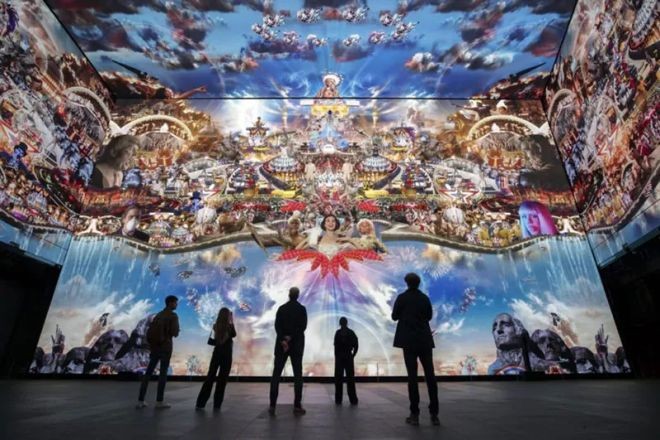
1). شاشة LED صغيرة الحجم:
Small pitch LED display is known for its tiny LED dot pitch (usually P2.5 and below), which means that the distance between each LED lamp bead is very short, thus achieving extremely high resolution and delicate picture quality.
This display can perfectly present high-definition images and videos with clear details and rich and realistic colors. More importantly, a small-pitch LED display can achieve seamless splicing; that is, there is no obvious gap between multiple display units, making the entire picture look like a complete screen.
This is crucial for immersive space because seamless pictures can greatly enhance the audience’s sense of immersion and substitution, making them feel as if they are in a real and coherent world.
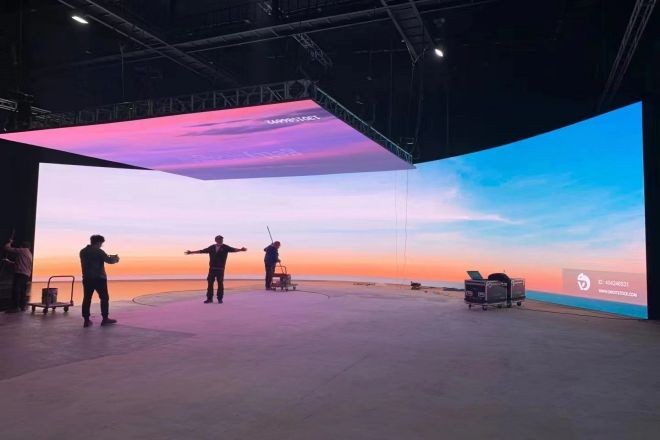
2). شاشة LED مرنة:
The biggest feature of flexible LED display is its bendable and foldable characteristics. This display can be shaped into various shapes and curves as needed to adapt to the needs of different spaces and scenes.
In immersive spaces, flexible LED displays can create unique visual effects, such as wraparound screens, curved walls, etc., bringing unprecedented visual experience to the audience.
In addition, flexible LED display also has the advantages of being light, thin, and portable, easy to install and disassemble, and very suitable for temporary or mobile immersive space applications. Designers can make full use of this feature to create more creative and imaginative design solutions.
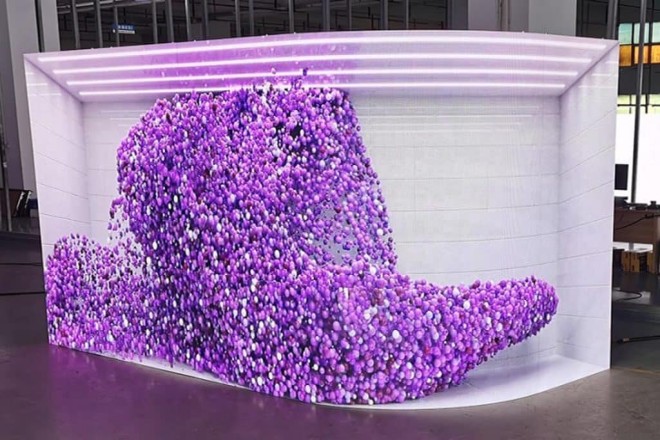
3D LED display is famous for its realistic three-dimensional effect. This display can present real three-dimensional scenes and objects through special display technology and visual effect processing, making the audience feel as if they are in a real three-dimensional world.
In immersive space, 3D LED display can bring more shocking and realistic visual effects. The audience can watch the three-dimensional objects on the screen at close range and feel their three-dimensional sense and depth.
In addition, 3D LED display also has the characteristics of wide viewing angle and strong interactivity, which can interact with the audience in real time to enhance their participation and fun.
In summary, small-pitch LED displays, flexible LED displays, and 3D LED displays are all types of LED displays designed for immersive experiences.
They each have unique characteristics and advantages, and the appropriate display type can be selected according to the specific needs and design of the immersive space.
By reasonably selecting and applying these display types, we can bring a more realistic, shocking, and creative immersive experience to the audience.
4. Challenges that may be faced when creating an immersive space
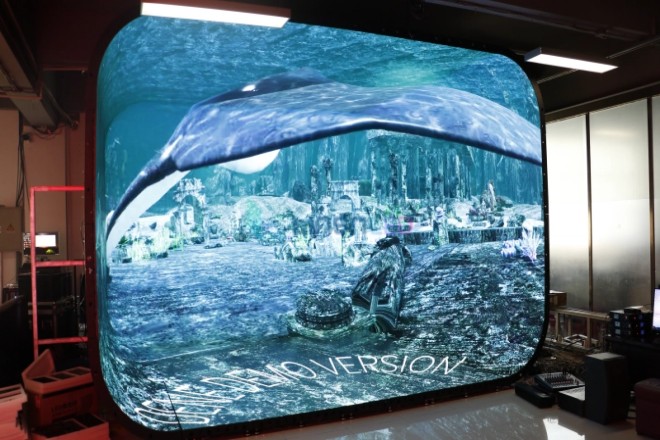
1). التحديات التقنية
1.1). Technology Integration and Collaboration
Immersive spaces need to integrate multiple technologies, such as high-definition displays, sound systems, interactive sensing, etc., to ensure that they can seamlessly connect and work together.
- Coping strategies:
Adopt modular design to modularize different technologies for easy integration and debugging. At the same time, select devices with open interfaces and good compatibility to ensure the synergy between technologies.
1.2). Content Creation and Update
The content of immersive spaces needs to be constantly innovative to attract audiences and keep their interest. At the same time, as technology continues to develop, the speed of content updates also needs to keep up.
- Coping strategies:
Establish a content creation team to focus on the design and development of immersive content. At the same time, cooperate with third-party content providers to introduce more high-quality content. In addition, adopt modular content design to facilitate content updates and replacements.
1.3). User Experience Optimization
Providing a smooth, natural, and engaging user experience is the key to the success of immersive spaces.
- Coping strategies:
Conduct user surveys to understand the needs and expectations of the audience. Based on the survey results, optimize hardware equipment, software algorithms, and content design to ensure the comfort and attractiveness of the user experience.
2). Cost control and cost-effectiveness improvement
2.1). Hardware cost
Immersive space requires a large number of high-quality hardware devices, which are often expensive.
- Coping strategy:
Conduct market research and select hardware devices with high-cost performance. At the same time, installment payment, leasing, and other methods can be used to reduce initial investment costs.
2.2). Software and technical support
Software and technical support are the guarantee for the normal operation of immersive space, but they also require a lot of money.
- Coping strategy:
Choose a software provider with mature technology and a good reputation to ensure the stability and reliability of the software. At the same time, a long-term cooperative relationship with the technical support team should be established to reduce the cost of technical support.
3). Heat dissipation and energy consumption management under long-term operation
3.1). Heat dissipation design
Hardware devices in immersive space will generate a lot of heat when running for a long time, affecting the performance and life of the equipment.
- Coping strategy:
Adopt reasonable heat dissipation design, such as adding heat dissipation components such as heat sinks and fans, optimize equipment layout and ventilation conditions, and ensure that the equipment can maintain a stable temperature under long-term operation.
3.2). Energy consumption management
Long-term operation will increase energy consumption and increase operating costs.
- Coping strategy:
Use energy-saving technologies such as intelligent control and low-power hardware to reduce energy consumption. At the same time, the equipment operation mode and usage time should be optimized, such as using time-sharing operation and sleep mode, to further reduce energy consumption.
خاتمة
LED display, this small technological miracle, is quietly changing our world. From cool advertisements in shopping malls to private theaters at home, it is everywhere, making every scene more vivid and interesting.
Of course, it also faces challenges, such as how to be cheaper and more environmentally friendly. However, I believe that with the advancement of technology, these problems will be solved.
أخيرًا، إذا كنت تريد معرفة المزيد عن شاشات LED، يرجى الحصول على اتصال معنا.
